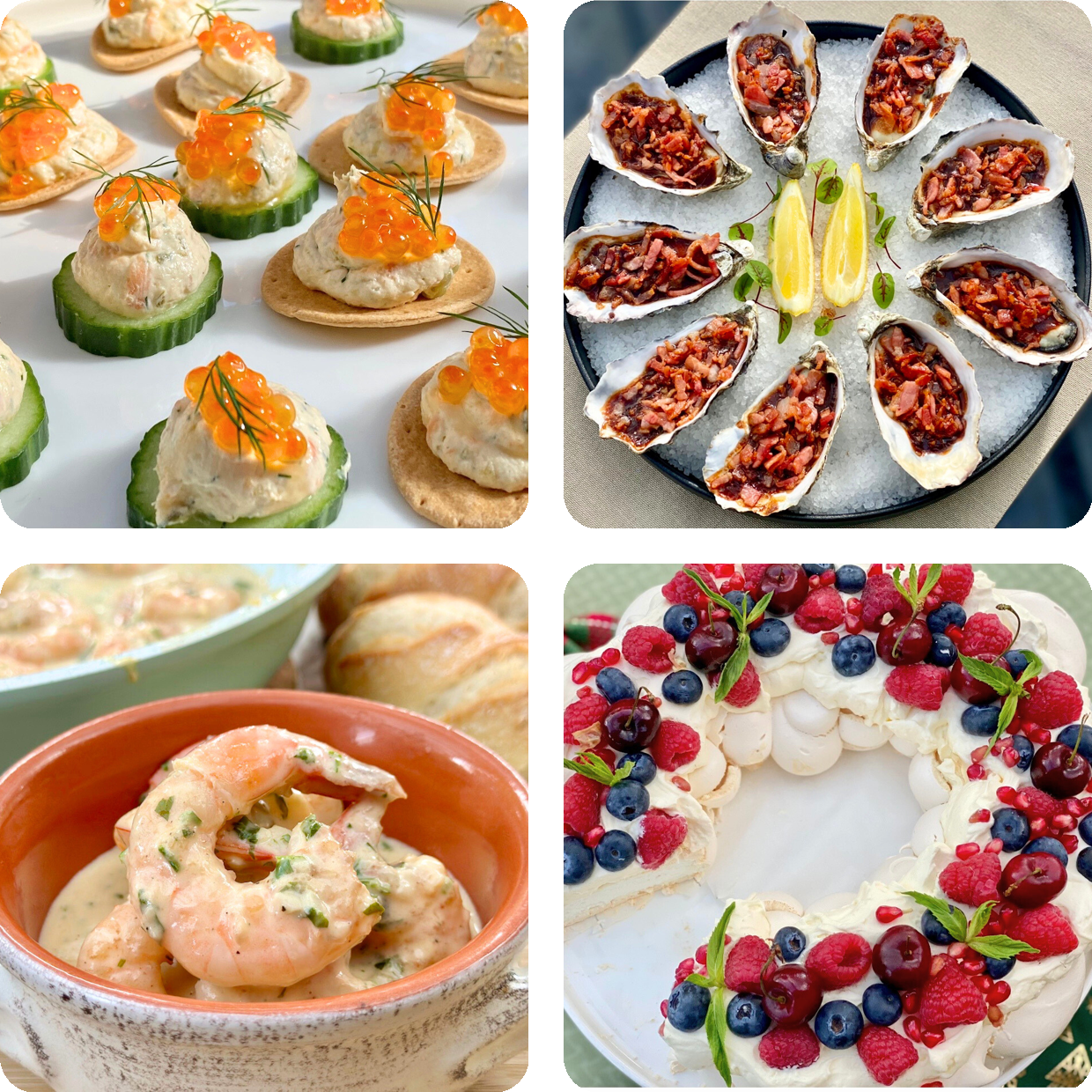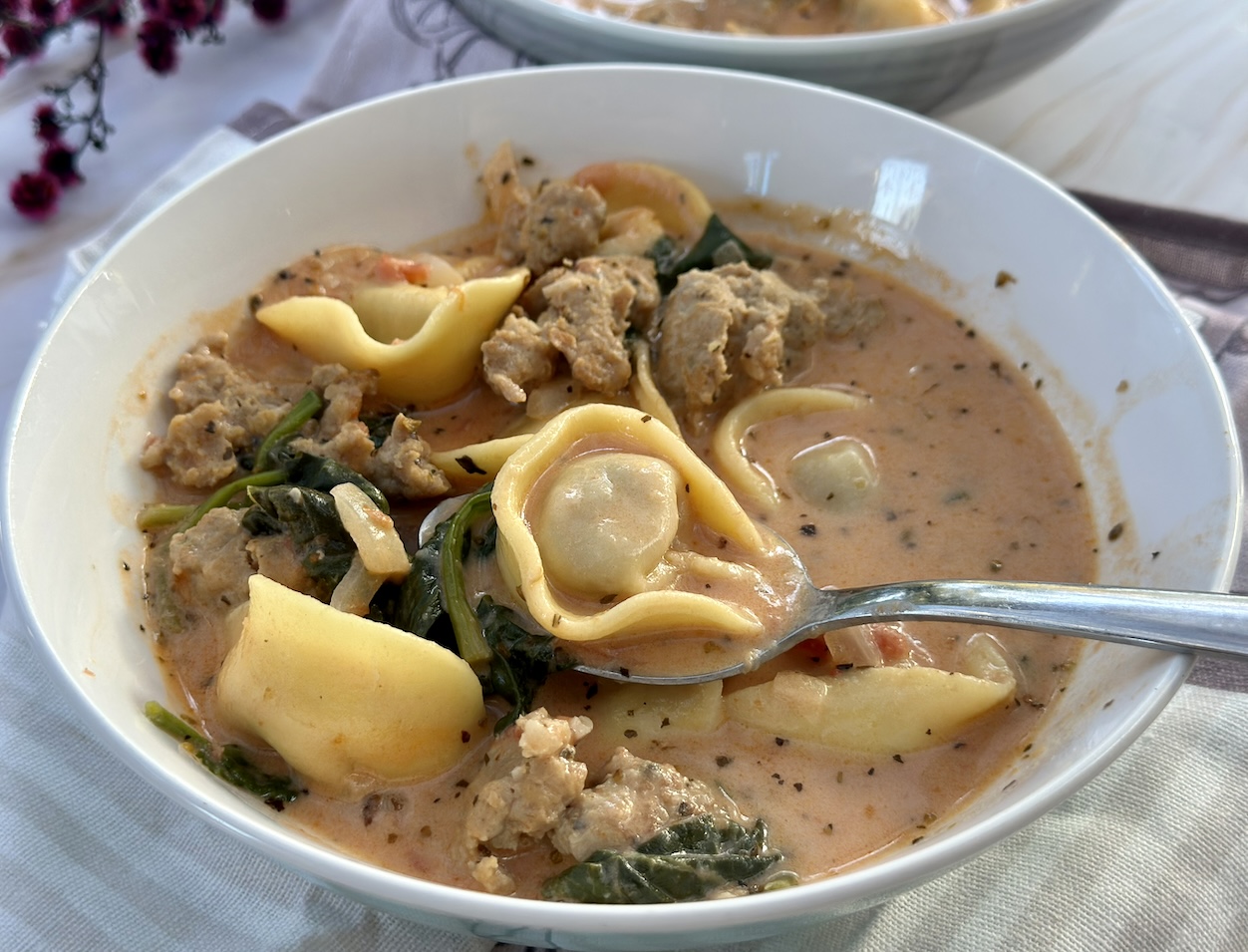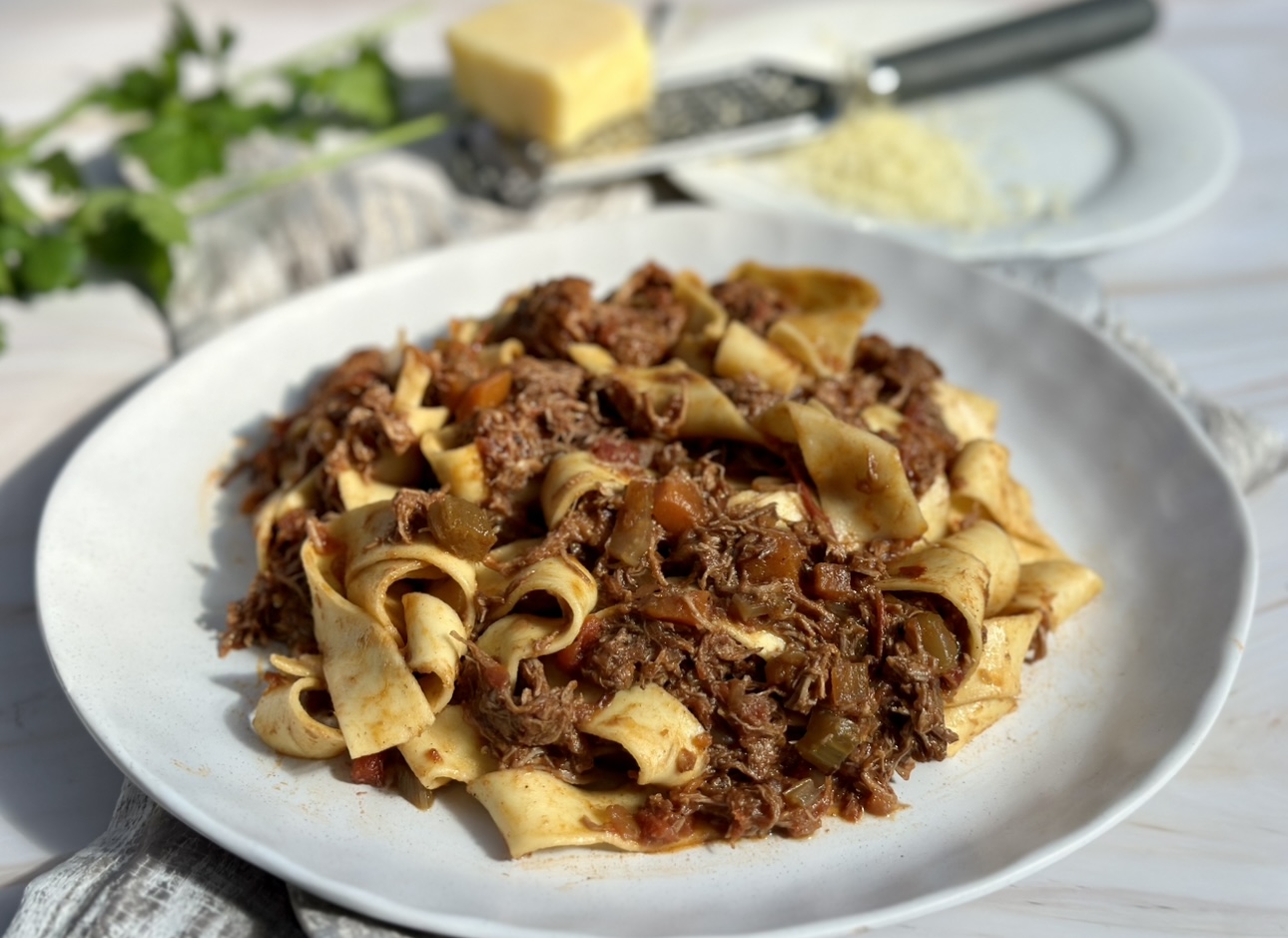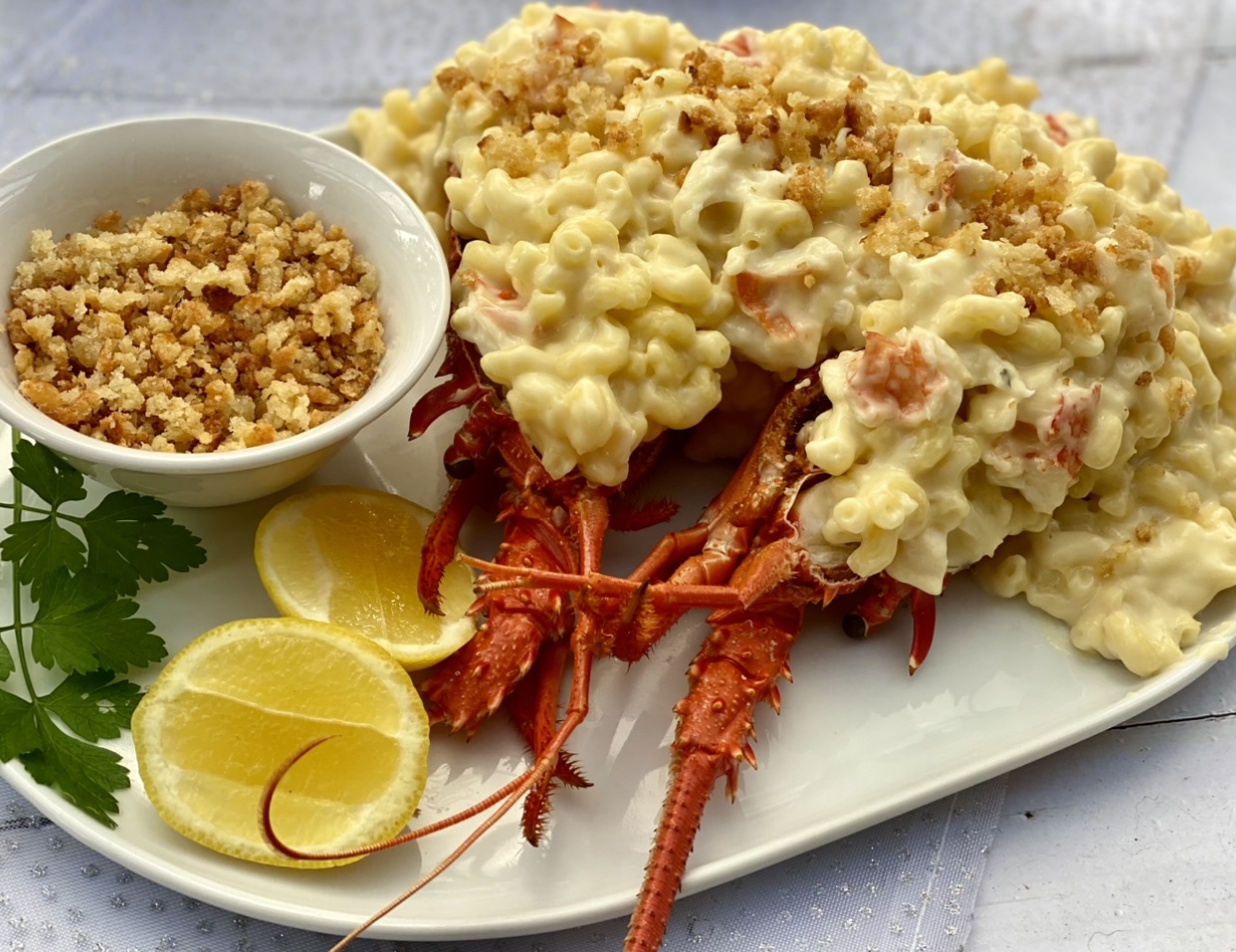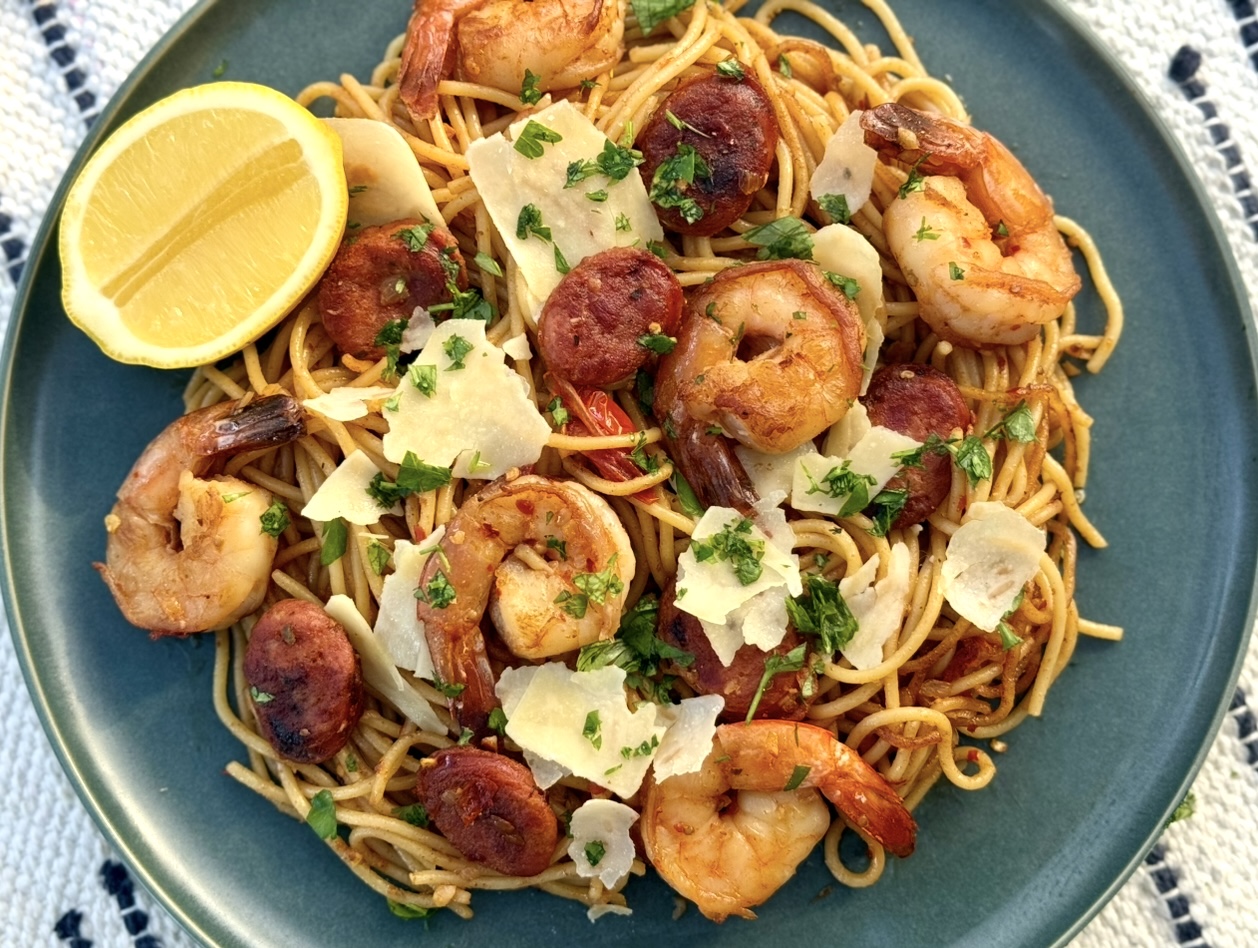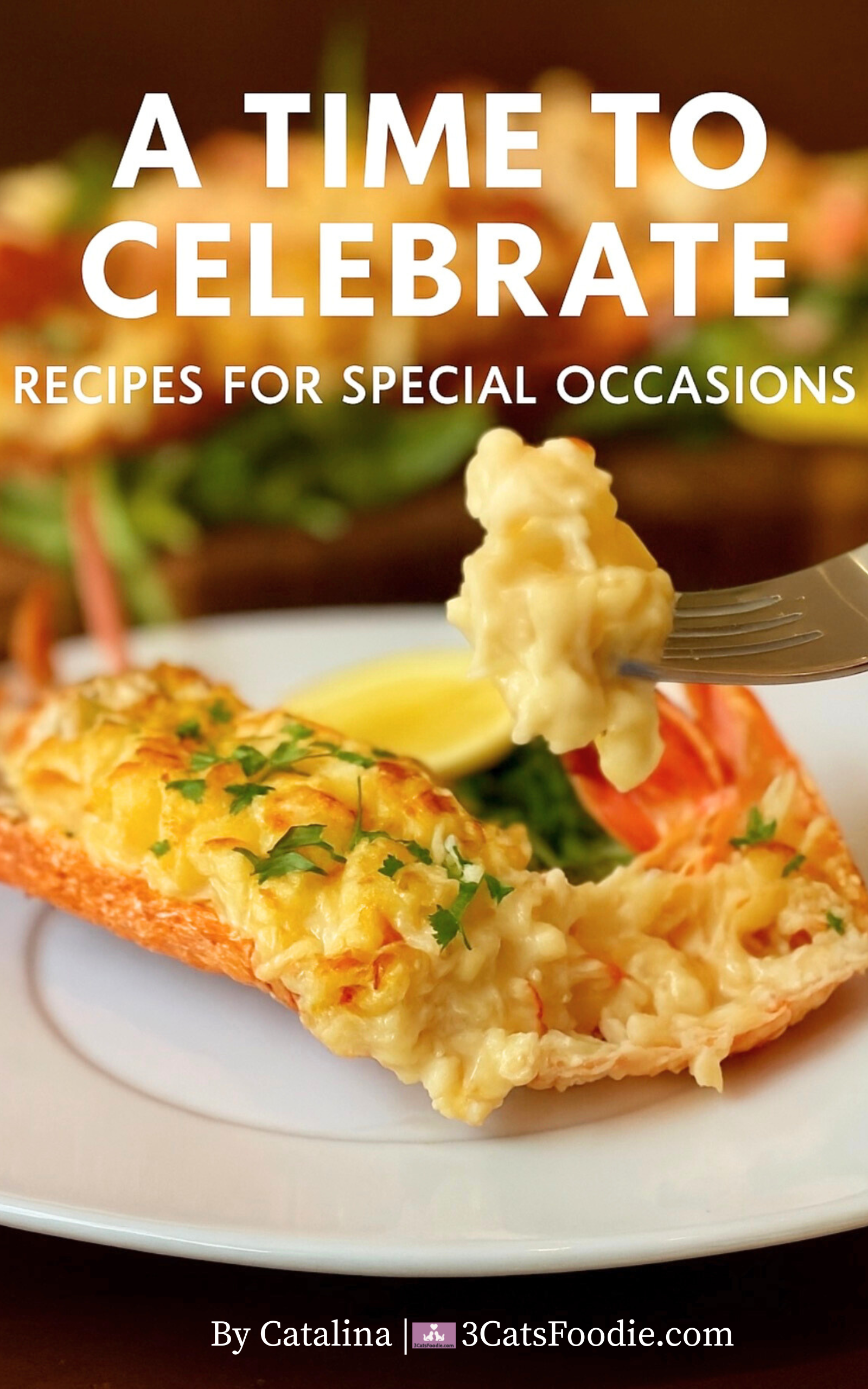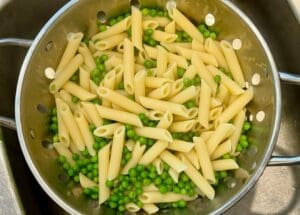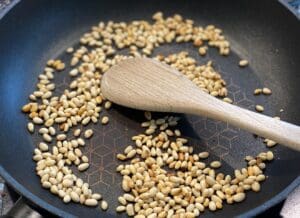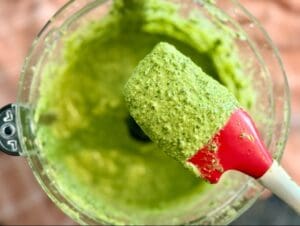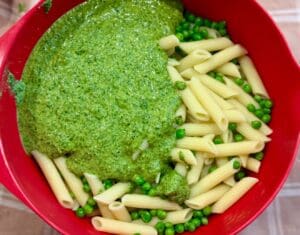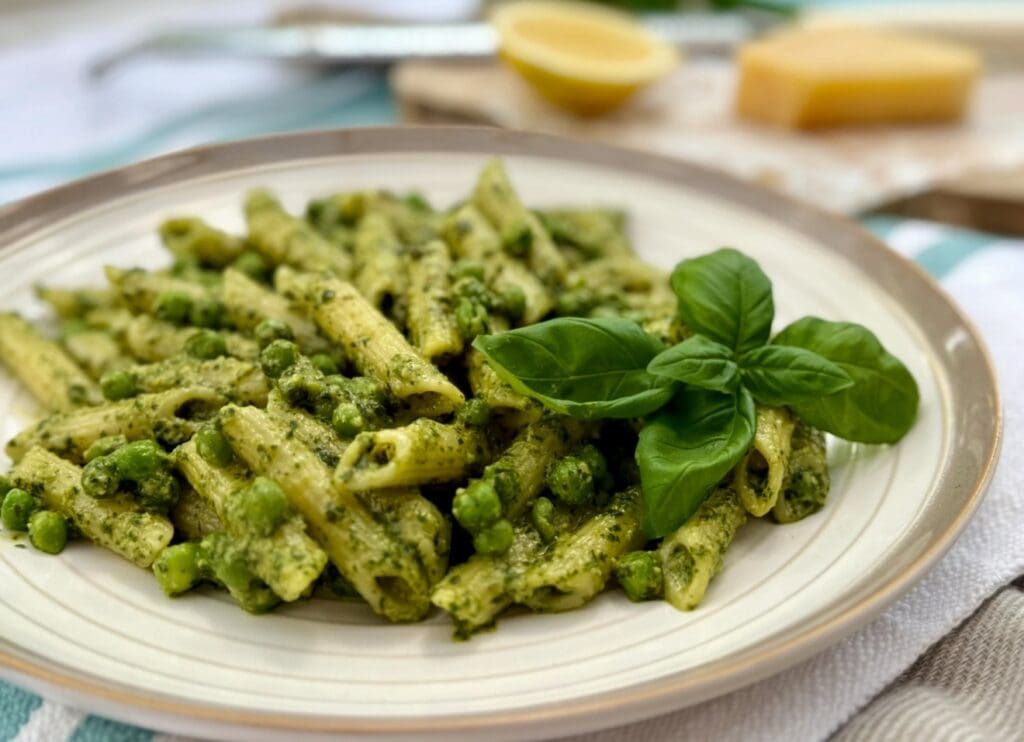
Bursting with flavours from toasted pine nuts, parmesan, basil, rocket and lemon, this Pea Pesto Pasta is going to knock your socks off!
Simple, tasty, and fulfilling green pasta!
Hello! After a really hectic couple of months, I’ve finally found my way back here. My little dude starting kindergarten last week has brought about a big change in my life. After 5 beautiful years together, what am I supposed to do with myself now? Pour a glass of wine, sing, dance and cook, of course! Maybe not dance just yet because I’m still recovering from tired-parent-syndrome.
Kai looked so tiny, handsome and adorable in his school uniform. We watched with excitement as he walked confidently into his classroom on his first day of school. What I didn’t expect to see was my husband wiping tears sheepishly from his face, and then it was all over for me too! Our boy is no longer a baby! 😭 Gosh, such sappy parents.
My plan was to jump right back into posting new recipes after the holidays, but my phone died from water damage, then a few weeks later my MacBook laptop refused to turn on. Hold on, it gets better! My husband dropped his phone in the pool a few weeks later. Here Apple, take our money!
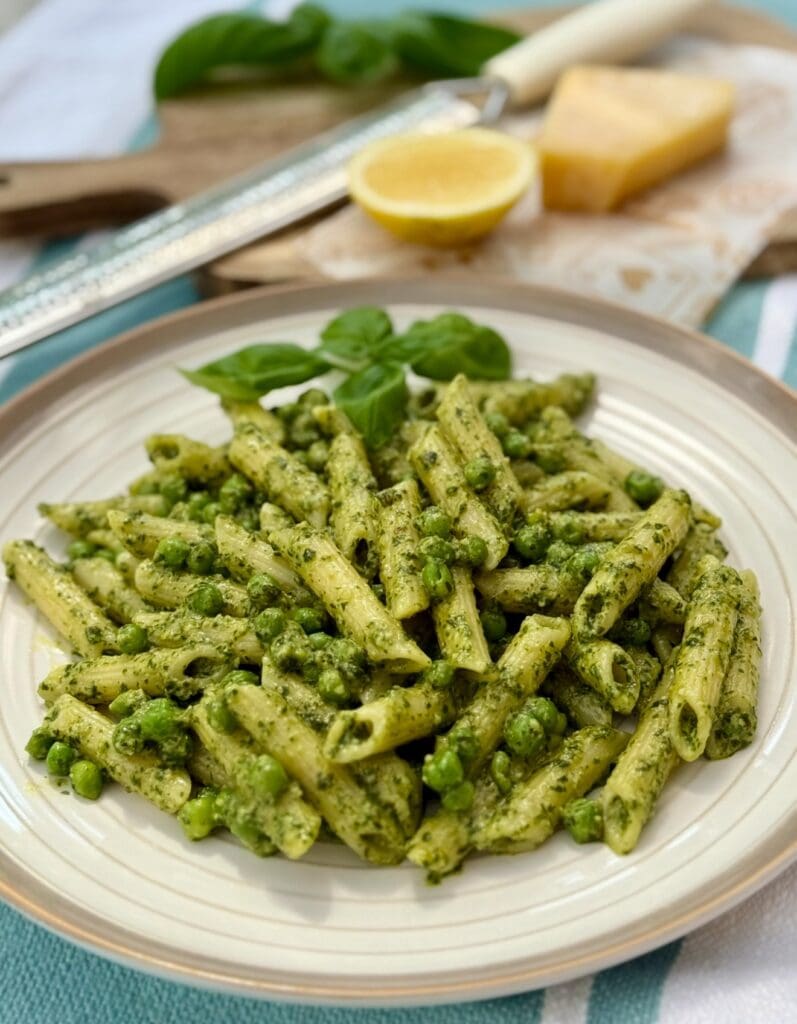
Kicking off this year with this amazing pea pesto pasta! An easy and scrumptious dish to whip up, especially if you have an abundance of basil growing in your garden.
The depth of flavour from this pesto comes from toasting the pine nuts, which intensifies their nutty flavour and aroma. It’s then blended with basil, baby rocket, garlic, parmesan, lemon juice and olive oil. Toss the pesto with some pasta and peas for a speedy, healthy meal done in under 30 minutes.
This Pea Pesto Pasta is delicious and satisfying on its own, but you could serve it as a salad or a side dish with just about everything!
Pea Pesto Pasta
Why toast pine nuts?
Toasting pine nuts enhances their flavour by bringing out their natural oils and nuttiness. This extra step is worth your time because toasted pine nuts intensify the taste and aroma of the pesto. Dry toasting the pine nuts in a frying pan is easy and won’t take too much of your time! Keep an eye on them though, as they’ll taste bitter when burnt.
What kind of oil should I use for pesto?
Most pesto recipes call for high-quality extra virgin olive oil, which you can definitely opt for, but I find regular or mild olive oil works just as well. To let the herbs flavour stand out in my pesto, I like to use mild olive oil, as some extra virgin olive oils are quite strong.
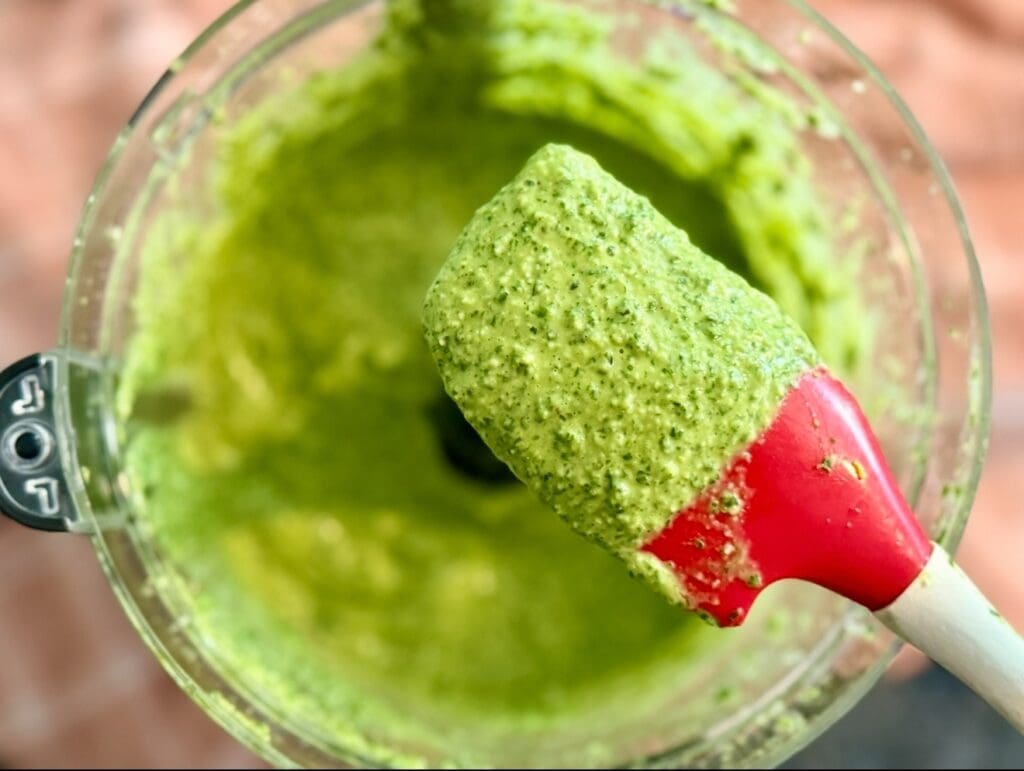
Which pasta goes well with pesto?
Pesto is a versatile sauce that pairs well with a variety of pasta, long and short. You could opt for spaghetti, linguine, penne or bow ties.
Why use baby rocket?
Baby rocket, also known as arugula, adds a distinct flavour and unique dimension to the pesto. I used baby rockets as they’re less bitter than regular rocket. Rocket offers several health advantages; it’s full of vitamins A, C, and K, plus antioxidants and minerals such as potassium and calcium. If you’re not a fan of rocket, you could swap for equal amounts of baby spinach or add more basil.
How do I know when my pesto is done?
Pesto should have a smooth texture with some small but noticeable texture (no big chunks of ingredients). It should also be quite thick and vibrant green with a strong herb aroma. Always do a taste test after and adjust the pesto to your liking by adding salt and pepper or more lemon juice.
More delicious pasta recipes to try:
Ingredients for Pea Pesto Pasta
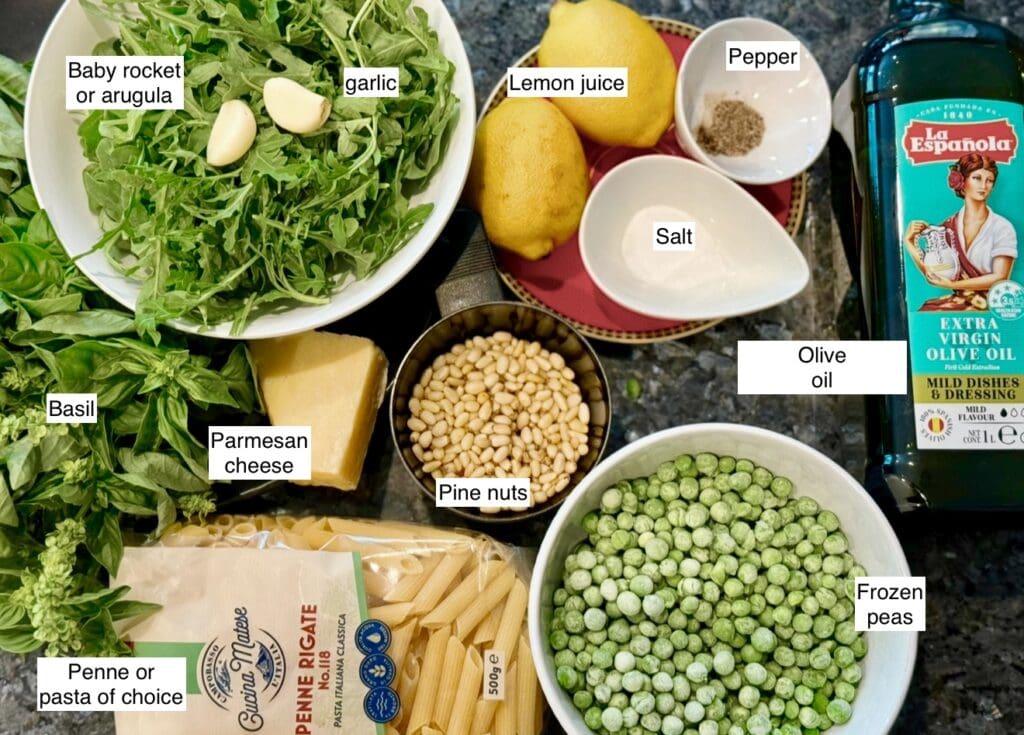
Penne pasta – I used penne pasta, but any short or long dried pasta of choice would also work.
Pine nuts are small edible nuts (technically seeds) found in pine trees. With nutty and buttery flavours, pine nuts are popular in dishes like pesto, salads, and pasta. Supermarkets typically stock pine nuts near the health or nuts section. You could swap pine nuts with chopped cashews.
Baby rocket (arugula) – I like to use baby rocket because it’s less bitter and won’t overwhelm the flavour of the pesto. You could swap rocket with baby spinach.
Parmesan cheese – It’s worth the effort to grate your own parmesan cheese rather than buying store-bought shredded cheese. Most pre-shredded cheese contains anti-caking agents, which may not blend as nicely into the pesto.
Olive oil – I usually opt for milder olive oil in my pesto to let the other flavors shine, as virgin olive oil can be overpowering. This time, I used extra virgin olive oil and didn’t mind it at all, so any good quality virgin olive oil will work.
Subscribe to 3CatsFoodie’s FREE Newsletter

For the latest recipes and other fun stuff!
How to make Pea Pesto Pasta with Rocket and Pine Nuts
Step-by-step guide with photos
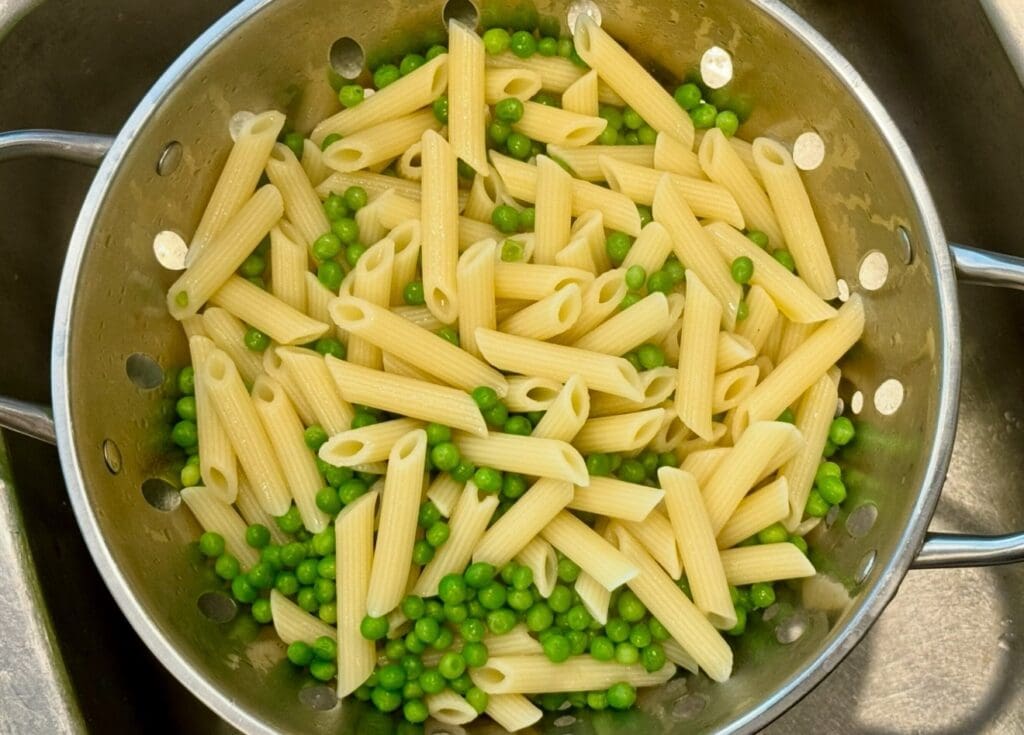
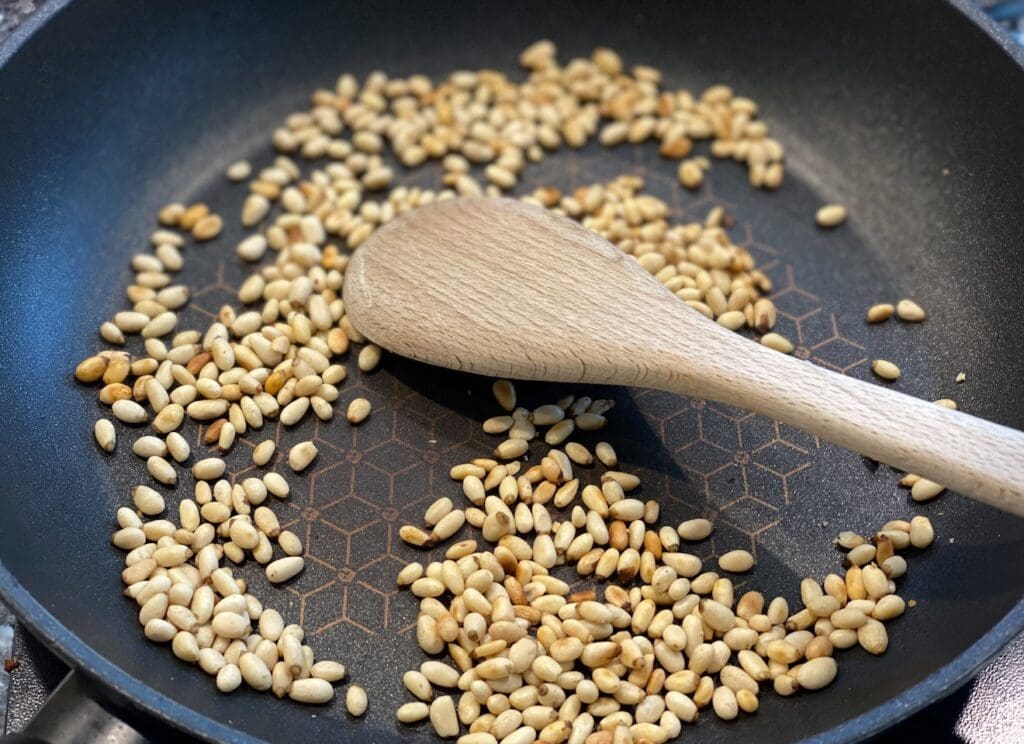
Cook pasta according to the package instructions, usually around 8-10 minutes or until al dente. Stir occasionally to prevent sticking. When the pasta’s almost done, scoop 1/4 cup of pasta water and set aside, then add the peas and cook for 1 to 2 minutes or until tender. Drain the pasta and peas using a colander, rinse quickly with cold water, and drain again. Toss the pasta with a small amount of olive oil to prevent them from clumping.
Toast pine nuts in an unoiled small frying pan over medium-high heat until golden brown and aromatic, then let cool slightly.
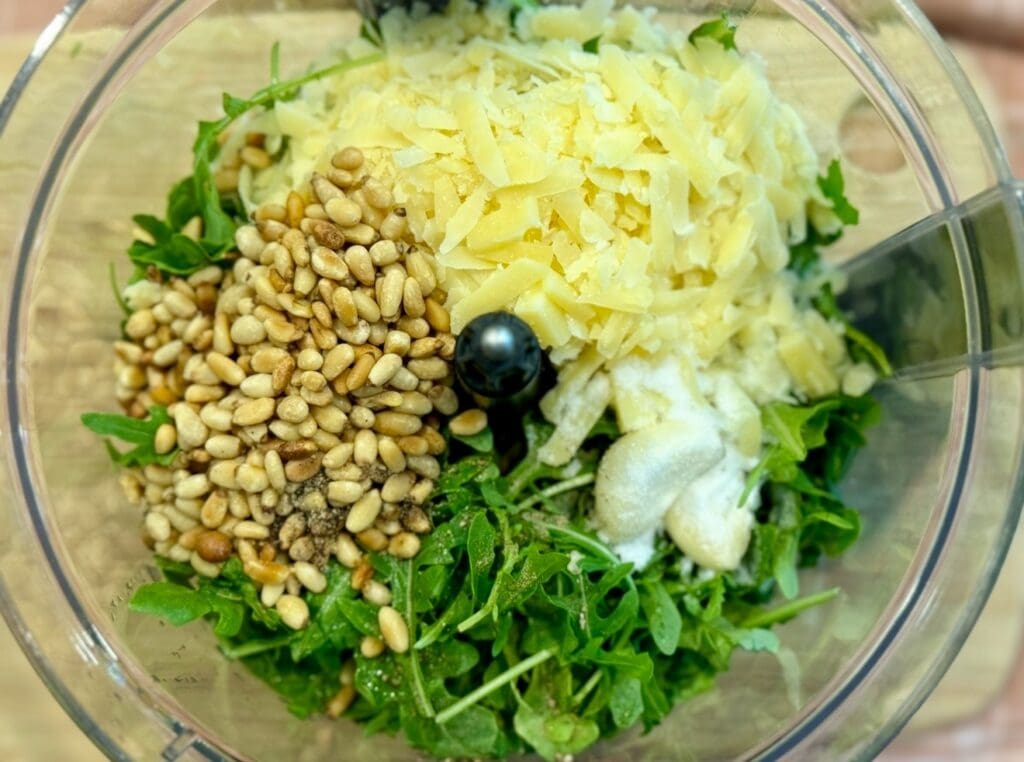
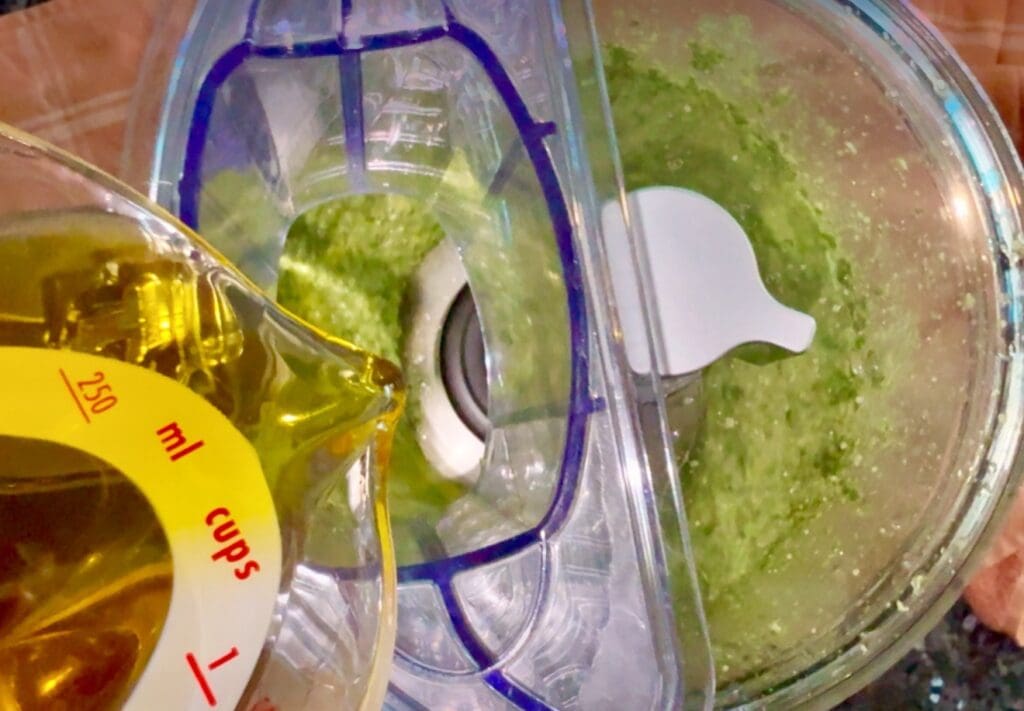

Combine the pine nuts and all the pesto ingredients (except olive oil) in a food processor. Blitz the ingredients on medium-high until finely chopped, then use a spatula to scrape the sides, and blitz again. Whilst the motor is running at low speed, drizzle the oil through the tube, stop and scrape down the sides if needed. The pesto should be smooth with tiny, visible textures. Taste the pesto and adjust the seasoning and add more lemon juice for extra tang if desired.
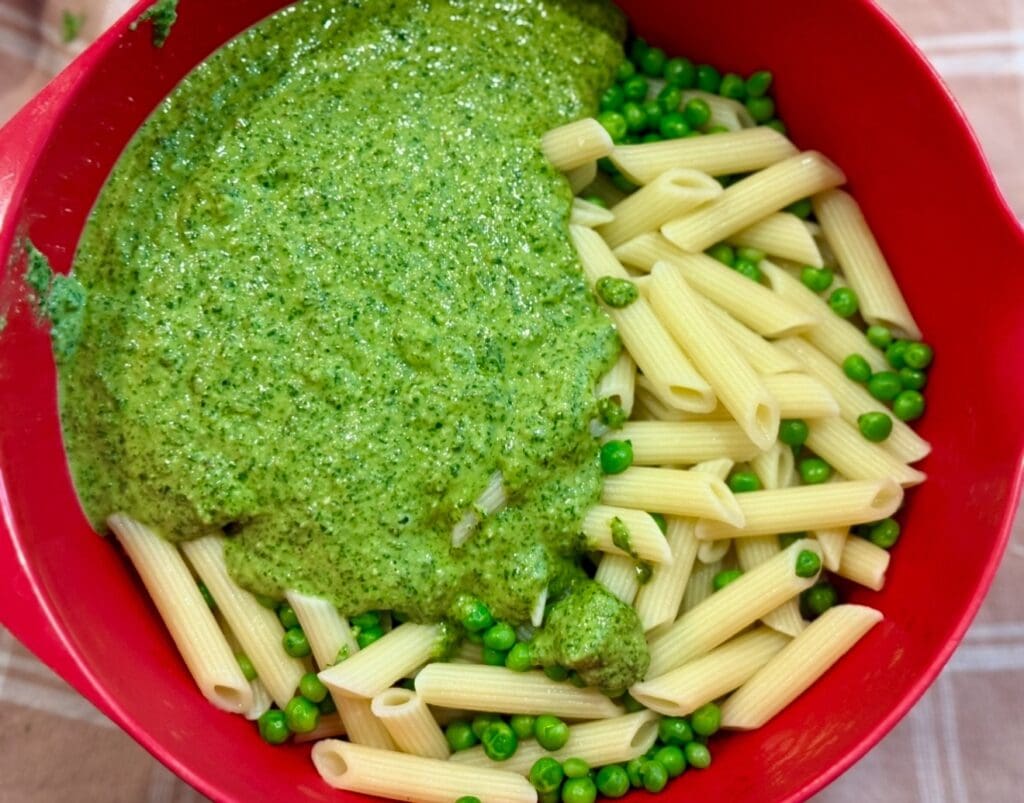

In a large bowl, combine the pasta, peas, reserved pasta water, and pesto. Toss the pasta and pesto gently until evenly coated. Taste the pasta and add more salt and pepper if needed, then serve with freshly grated parmesan.
How to store pesto pasta
Leftovers – Transfer the pesto into an airtight container and store in fridge for up to 3 days.
I’ve used a third-party application to calculate the calories and nutritional information, so please use this as an approximate guide only.
Cooking measurements are in Australian standard spoon and cup measurements. For specific details and conversions, visit our Australian Cooking Measurements page.
I would love your feedback and support if you made this recipe. To do this, please rate this recipe and provide a comment by scrolling down this page or by clicking that green circle on the bottom left. An email address is required (for spam), but it won’t be published. I would also love to see your dish, so don’t forget to tag me on my Instagram account ‘3catsfoodie’
Cheers – Cat T
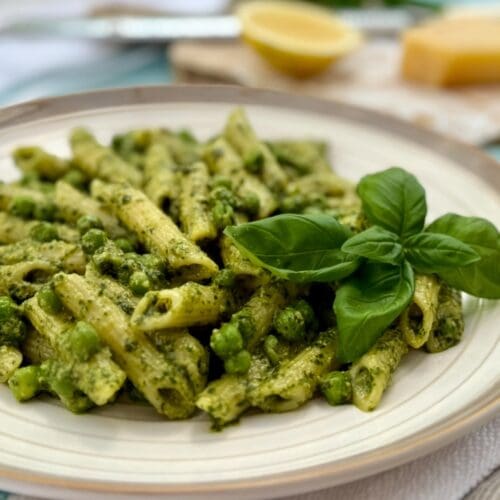
Pea Pesto Pasta with Rocket and Pine Nuts
Video
Ingredients
- 400g / 14oz penne pasta (or pasta of choice) (NOTE 1)
- 2 cups (280g / 9.5oz) frozen or fresh baby peas
FOR THE PESTO
- 4 tbsp (55g / 1.9oz) pine nuts (NOTE 2)
- 50g / 1.8oz basil leaves
- 50g / 1.8oz baby rocket or arugula (NOTE 3)
- 2 large garlic cloves
- 90g / 3oz freshly grated parmesan cheese (extra to serve) (NOTE 4)
- 2 tbsp (40ml / 1.4floz) fresh lemon juice
- ½ tsp salt
- ¼ tsp freshly ground black pepper
- 170ml / 5.7floz olive oil (NOTE 5)
Instructions
- Cook pasta according to the package instructions, usually around 8-10 minutes or until al dente. Stir occasionally to prevent sticking. When the pasta's almost done, scoop 1/4 cup of pasta water and set aside, then add the peas and cook for 1 to 2 minutes or until tender. Drain the pasta and peas using a colander, rinse quickly with cold water, and drain again. Toss the pasta with a small amount of olive oil to prevent them from clumping.

- Toast pine nuts in an unoiled small frying pan over medium-high heat until golden brown and aromatic, then let cool slightly.

- Combine the pine nuts and all the pesto ingredients (except olive oil) in a food processor. Blitz the ingredients on medium-high until finely chopped, then use a spatula to scrape the sides, and blitz again. Whilst the motor is running at low speed, drizzle the oil through the tube, stop and scrape down the sides if needed. The pesto should be smooth with tiny, visible textures. Taste the pesto and adjust the seasoning and add more lemon juice for extra tang if desired.

- In a large bowl, combine the pasta, peas, reserved pasta water, and pesto. Toss the pasta and pesto gently until evenly coated. Taste the pasta and add more salt and pepper if needed, then serve with freshly grated parmesan.


